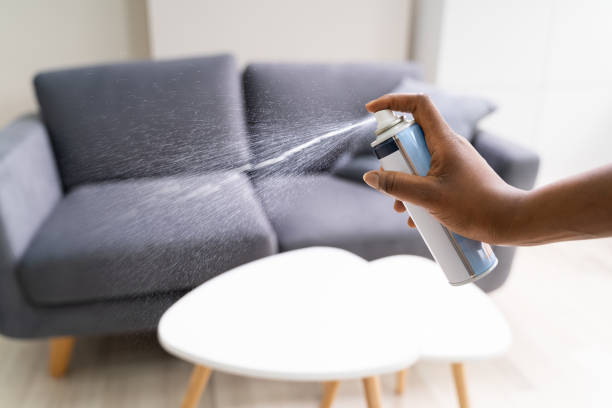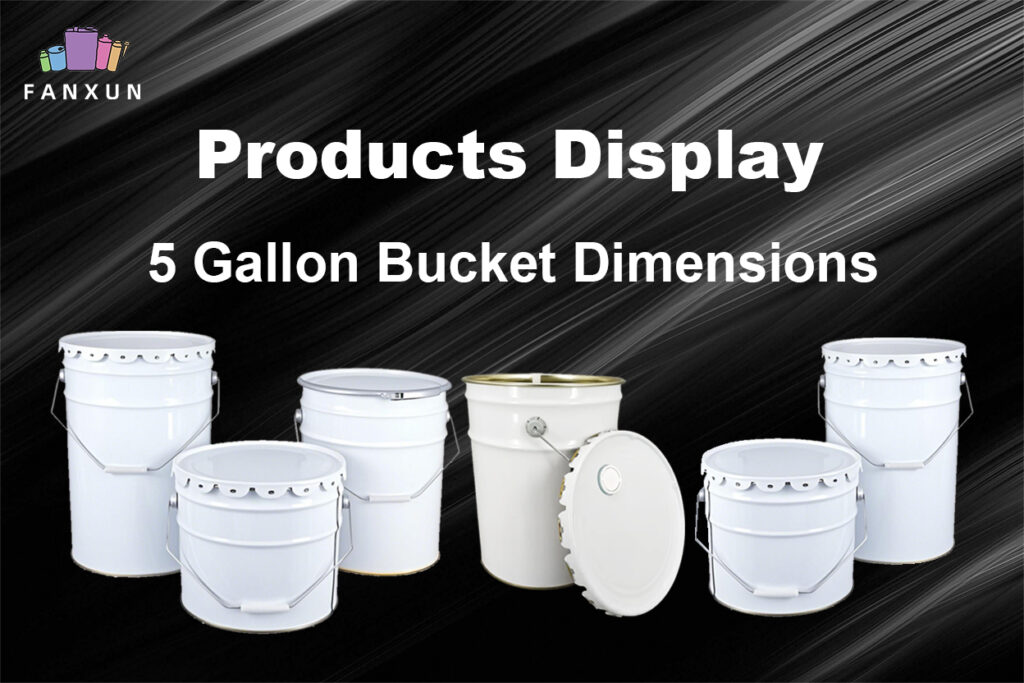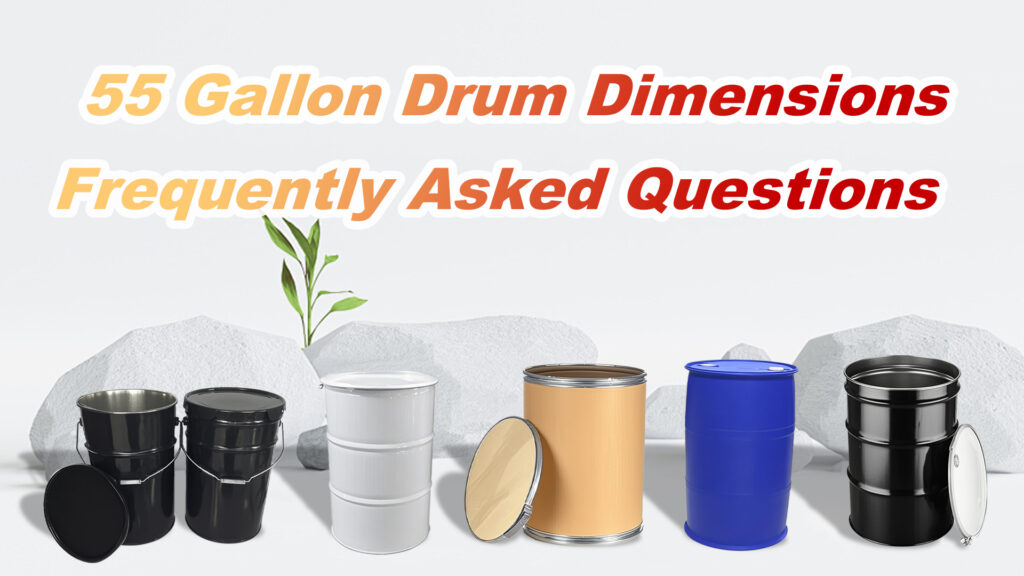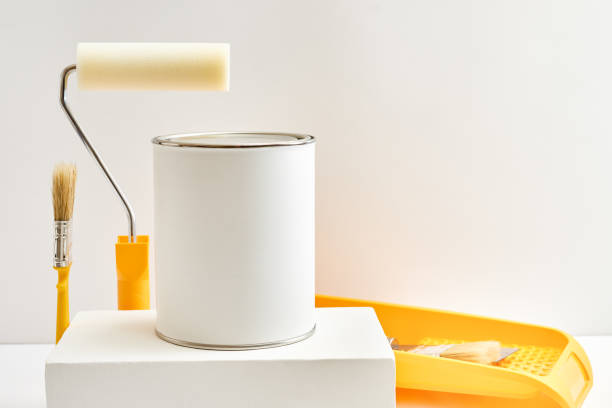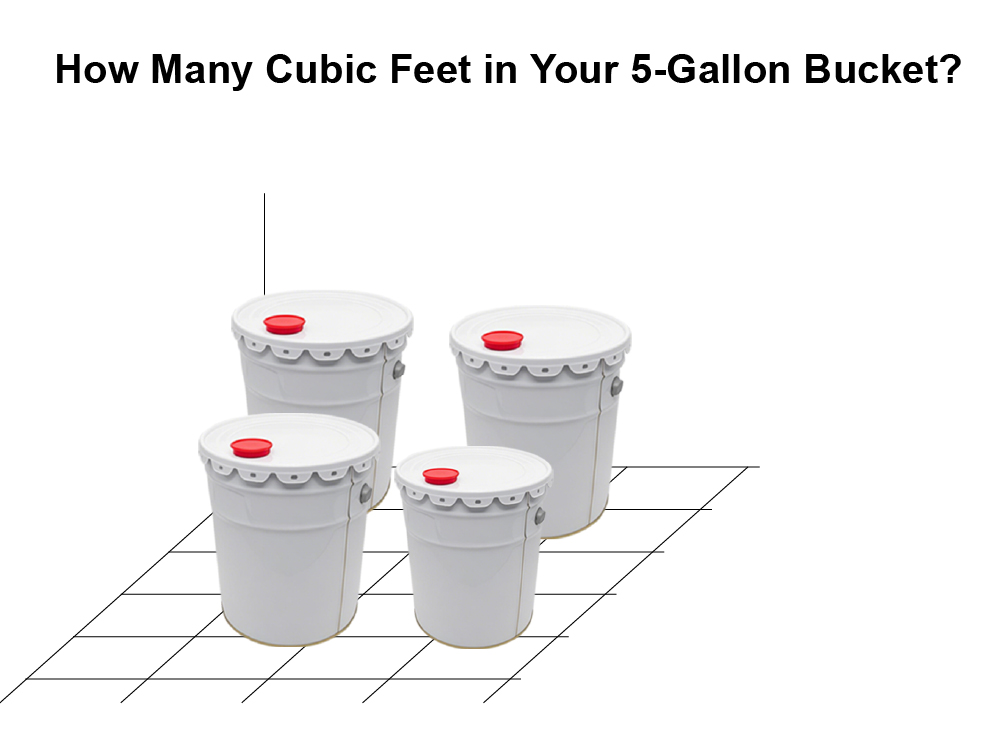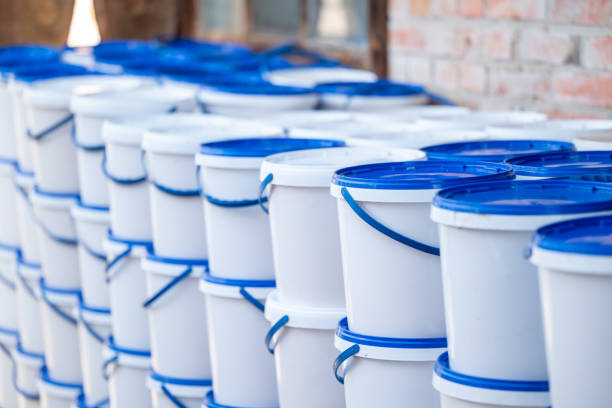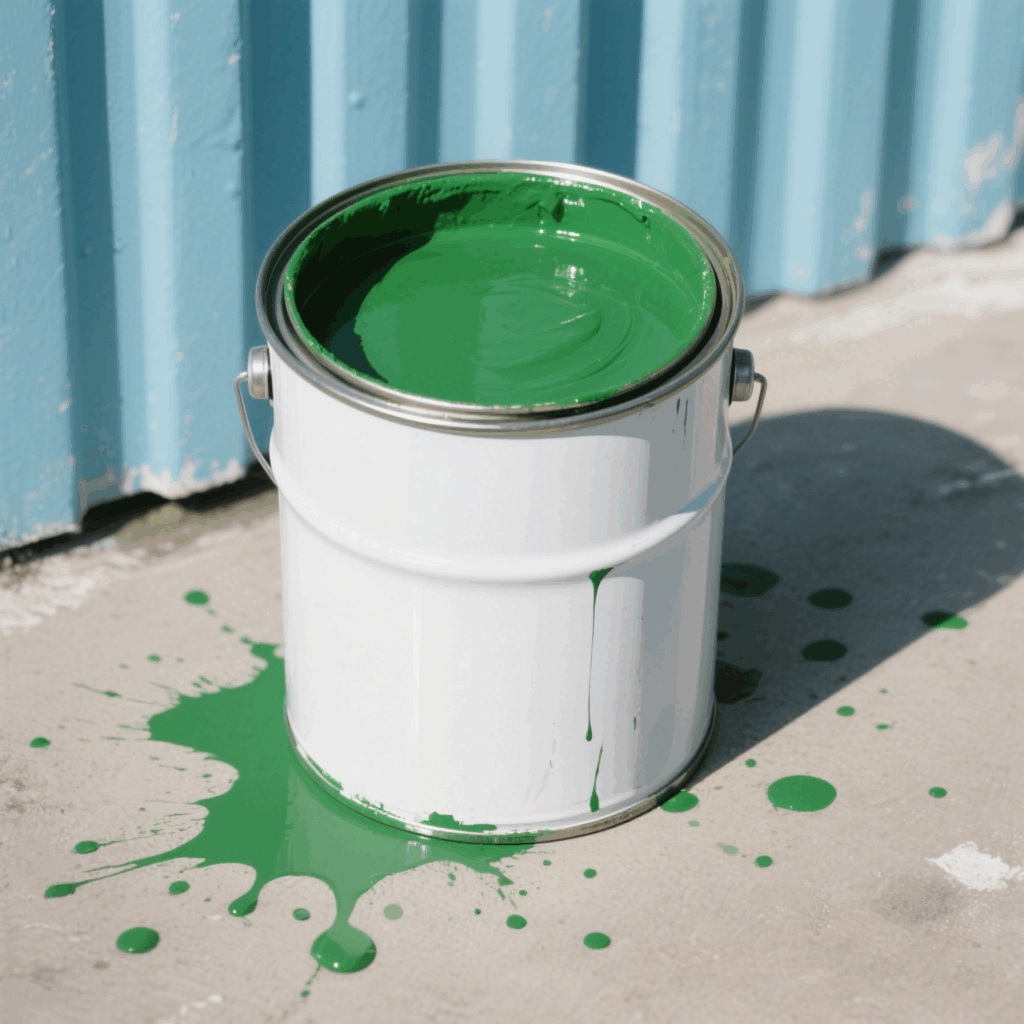Dust bunnies multiply in corners, grease splatters stubbornly cling to stovetops, and bathroom surfaces seem to attract grime like magnets. In our quest for a sparkling home, many of us reach for the convenience of aerosol cleaners. That satisfying psssshhhht sound often signals the start of a quick cleanup job. Nhưng bạn đã bao giờ dừng lại để nghĩ về những gì thực sự trong đó có thể, how it works, and whether it’s the best or safest option for your home and family?
Aerosol cleaners are ubiquitous on supermarket shelves, promising everything from streak-free windows to disinfected countertops with just a simple spray. They offer undeniable convenience, but there’s more to these pressurized cans than meets the eye. Are they miracle workers or potential hazards? Are they damaging the environment? How do you choose the right one, and how do you use it safely?
If you’ve ever pondered these questions while tackling your chores, you’re in the right place. This article is your comprehensive guide to household aerosol cleaners. We’ll delve into what they are, explore the different types available, Cân nặng ưu và nhược điểm, emphasize crucial safety precautions, discuss environmental considerations, look at alternatives, and answer your most pressing questions. By the end, you’ll have all the information you need to make informed decisions about using aerosol cleaners in your home.
What Exactly Is an Aerosol Cleaner, Anyway?
Before we dive deeper, let’s clarify what makes an aerosol cleaner an “aerosol.” It’s not just about the spray; it’s about the technology inside the can. An aerosol product consists of three main components:
- Sản phẩm cô đặc: This is the actual cleaning agent – the mixture of chemicals (surfactants, dung môi, chất khử trùng, nước hoa, vân vân.) designed to do the cleaning job.
- Chất đẩy: This is a gas or liquid gas that is pressurized inside the can. Its job is to push the product concentrate out when you press the nozzle. Common propellants used today include hydrocarbons (like propane, butane, isobutane – which are flammable) or compressed gases (like nitrogen, carbon dioxide, or compressed air – which are generally non-flammable). Trong lịch sử, Chlorofluorocarbons (CFCS) were used, but they were phased out due to their damaging effect on the ozone layer.
- The Can and Valve System: A sturdy (usually metal) can designed to withstand the internal pressure, equipped with a valve and actuator (the button you press) that controls the release of the product.
Khi bạn nhấn vòi phun, Van mở ra, and the internal pressure forces the mixture of propellant and product concentrate up through a dip tube and out of the nozzle. As the mixture exits, the propellant rapidly expands (if it’s a liquefied gas) or is released (if it’s a compressed gas), breaking the product concentrate into a fine mist or foam. This delivery system is what gives aerosols their characteristic spray pattern and convenience.
A Tour Through the Aerosol Cleaning Aisle: Types of Cleaners
Walk down the cleaning aisle, and you’ll see a vast array of aerosol cans targeting different tasks. Here are some of the most common types you’ll encounter:
- All-Purpose Cleaners: These are the jacks-of-all-trades, formulated to tackle general dirt and grime on multiple surfaces like countertops, walls, and some appliances. They often contain surfactants (to lift dirt) and possibly mild solvents. Always check the label for surface compatibility, as “all-purpose” doesn’t always mean all surfaces.
- Glass Cleaners: Designed specifically for windows, mirrors, and other glass surfaces, these aim for a streak-free shine. They typically contain solvents (like alcohol or ammonia derivatives) and surfactants that evaporate quickly.
- Bathroom Cleaners: This category includes several sub-types:
- Tub and Tile Cleaners: Often formulated to combat soap scum and hard water stains. May contain acids or chelating agents.
- Mold and Mildew Removers: Usually contain bleach or other fungicides to kill mold and mildew spores and remove stains. Require careful handling and good ventilation.
- Toilet Bowl Cleaners: While less common in aerosol form than liquids or gels, some foaming aerosol toilet cleaners exist, designed to cling to the bowl surface.
- Kitchen Cleaners:
- Degreasers: Formulated with strong solvents and alkaline agents to cut through tough grease on stovetops, hoods, and backsplashes.
- Oven Cleaners: Among the most heavy-duty aerosol cleaners, containing strong alkaline chemicals (like sodium hydroxide or potassium hydroxide) to dissolve baked-on food and grease. Require extreme caution, ventilation, and protective gear.
- Furniture Polish/Dusting Sprays: These aim to remove dust, shine surfaces (like wood), and sometimes provide a protective layer. They often contain silicones, oils, or waxes, along with solvents and emulsifiers. Some are designed to trap dust rather than just displace it.
- Carpet and Upholstery Cleaners: Usually dispensed as a foam, these are designed to lift stains and dirt from fabric fibers. They contain surfactants and sometimes solvents. Always test on an inconspicuous area first, as they can potentially discolor some fabrics.
- Làm mát không khí: While not technically người dọn dẹp (they don’t remove dirt or kill germs unless specified as disinfectants), aerosol air fresheners are often found in the same aisle and use the same technology. They work by masking odors or, in some cases, neutralizing odor molecules with specific chemicals. They primarily release fragrance and propellants into the air.
- Disinfectant Sprays: These are designed specifically to kill bacteria, viruses, and fungi on hard, non-porous surfaces. They must contain EPA-registered active ingredients (like quaternary ammonium compounds, rượu bia, or phenolic compounds). Crucially, the surface must remain wet for a specific “contact time” (mentioned on the label) for disinfection to occur. Simply spraying and immediately wiping may not disinfect effectively.
Understanding the specific purpose of each type helps you choose the right tool for the job and avoid using a product that might be ineffective or even damage the surface you’re trying to clean.
Why We Love That Pressurized Power
There’s no denying the appeal of aerosol cleaners. They wouldn’t be so popular if they didn’t offer significant advantages:
- Unbeatable Convenience: This is perhaps the biggest draw. No measuring, no mixing, no diluting. Just grab the can, shake (if instructed), point, and spray. It’s cleaning made simple and fast.
- Effortless Application: The spray mechanism requires minimal effort. It’s easy to direct the spray exactly where you need it, whether it’s a broad surface or a targeted spot.
- Excellent Coverage: The fine mist or foam generated by aerosols allows for even and consistent coverage over surfaces, including large areas like mirrors or shower walls, or tricky spots like crevices or grates.
- Speed and Efficiency: Application is quick, and many formulations are designed to work fast, reducing overall cleaning time. Foaming cleaners cling to vertical surfaces, giving the active ingredients more time to work.
- Tailored Formulations: Manufacturers can create highly specific formulas for niche tasks. The sealed environment of the can also allows for the use of ingredients that might be unstable or reactive if mixed or stored differently.
- Product Protection: The sealed can protects the cleaning product from contamination by air, Nước, or bacteria, and prevents volatile ingredients from evaporating. This helps maintain the product’s effectiveness over its shelf life.
For quick touch-ups, specific tough jobs (like oven cleaning), or achieving that streak-free shine on glass, aerosols often feel like the easiest path to cleanliness.
Nhược điểm: Important Considerations Before You Spray
Despite their convenience, aerosol cleaners come with significant drawbacks that every user should be aware of. These fall mainly into environmental and health categories.
-
Mối quan tâm về môi trường:
- Các hợp chất hữu cơ dễ bay hơi (VOC): Many aerosol cleaners (and air fresheners) release VOCs into the air. These are carbon-containing chemicals that evaporate easily at room temperature. VOCs contribute to indoor air pollution and can react with nitrogen oxides in the presence of sunlight outdoors to form ground-level ozone (khói bụi), a major air pollutant harmful to human health and ecosystems. While CFCs are gone, other VOCs used as solvents or fragrances remain.
- Đẩy: While modern propellants don’t deplete the ozone layer like CFCs did, commonly used hydrocarbon propellants (propan, butane) are highly flammable and are potent greenhouse gases, contributing to climate change when released. Compressed gas propellants (nitrogen, CO2, không khí) have less environmental impact but may result in less consistent spray pressure as the can empties.
- Waste and Recycling: Aerosol cans are often made of steel or aluminum (recyclable materials) but also contain plastic components (nozzle, cap) and residual product/propellant. This mixed-material nature, combined with potential hazards from residual pressure or chemicals, makes them difficult to recycle. Many municipal recycling programs do not accept them, or have very specific instructions for handling them (VÍ DỤ., ensuring they are completely empty). They often end up in landfills.
-
Health Concerns:
- Inhalation Risks: Spraying aerosols releases fine droplets and vapors into the air, which can be easily inhaled. This can irritate the respiratory tract, trigger asthma attacks, or cause headaches, dizziness, and nausea, especially in poorly ventilated areas. Ingredients like fragrances, dung môi, ammonia, bleach, and disinfectants can all be problematic. Long-term exposure to some chemicals found in cleaning products is a subject of ongoing research regarding potential chronic health effects.
- Skin and Eye Irritation: Direct contact with the spray can irritate the skin and eyes. Some cleaners, particularly heavy-duty ones like oven or mold cleaners, can cause severe burns.
- Accidental Ingestion: Like all cleaning products, aerosols pose a risk if accidentally ingested, particularly to curious children or pets. The combination of chemicals and propellants can be highly toxic.
- Tính dễ cháy: Aerosols using hydrocarbon propellants are flammable. Spraying near open flames, Đèn thí điểm, tia lửa, or very hot surfaces can cause a fire or explosion.
-
Trị giá: Ounce for ounce, aerosol cleaners are often more expensive than their liquid counterparts, especially concentrates that you dilute yourself. You’re paying a premium for the convenience and the packaging technology.
-
Potential Surface Damage: The powerful chemicals in some aerosols, or the propellants themselves, can damage sensitive surfaces if used improperly. Always test in an inconspicuous spot and follow label directions regarding compatible materials.
Understanding these downsides doesn’t necessarily mean banning aerosols entirely, but it highlights the critical importance of using them safely and responsibly, and considering alternatives when appropriate.
Safety First! How to Use Aerosol Cleaners Responsibly
Given the potential hazards, adopting safe practices when using aerosol cleaners is non-negotiable. Your health and the safety of your home depend on it.
- READ THE LABEL. ALWAYS. This is the golden rule. Before you even press the nozzle, read the entire label carefully. Pay attention to:
- Directions for Use: How to apply, how long to leave it on, whether to wipe or rinse.
- Warning Statements: Hazards like “dễ cháy,” “corrosive,” “eye irritant,” “harmful if inhaled,” vân vân.
- Precautionary Measures: Recommendations for ventilation, protective gear.
- First Aid Instructions: What to do in case of accidental exposure.
- Surface Compatibility: Which materials the product is safe (and unsafe) for.
- Thành phần: To be aware of potential allergens or particularly harsh chemicals.
- Storage and Disposal Instructions.
- Ventilate, Ventilate, Ventilate! This is arguably the most crucial safety step. Always use aerosol cleaners in a well-ventilated area. Open windows and doors. Turn on an exhaust fan (especially in bathrooms and kitchens). Nếu có thể, create cross-ventilation. Avoid using aerosols in small, confined spaces like closets or unventilated bathrooms. If you feel dizzy, headachy, or have trouble breathing, get to fresh air immediately.
- Protect Yourself (PPE): Consider using personal protective equipment, especially with stronger cleaners:
- Găng tay: Protect your skin from irritation or chemical burns. Nitrile or neoprene gloves are generally good choices for chemical resistance.
- Bảo vệ mắt: Safety glasses or goggles can prevent accidental sprays into the eyes.
- Mask: While a simple dust mask offers little protection against chemical vapors, a respirator mask with appropriate cartridges can reduce inhalation exposure, particularly important for individuals with respiratory sensitivities or when using harsh chemicals for extended periods.
- Lưu trữ đúng cách:
- Keep aerosol cans away from heat sources, open flames, tia lửa, Đèn thí điểm, and out of direct sunlight. High temperatures can increase internal pressure, potentially leading to bursting.
- Never store aerosols in your car on a hot day.
- Store them upright in a cool, nơi khô ráo.
- Keep them securely out of reach of children and pets. Treat them like any other potentially hazardous chemical.
- Apply Correctly:
- Always spray away from your face and body.
- Never spray towards other people or pets.
- Do not spray near food or food preparation surfaces unless the product is specifically labeled as safe for food-contact surfaces (and usually requires rinsing).
- Ensure ignition sources are turned off (VÍ DỤ., pilot lights on gas stoves) before spraying flammable aerosols nearby.
- Never puncture an aerosol can, Ngay cả khi trống, as residual propellant can still pose a risk.
- Never throw aerosol cans into a fire or incinerator – they can explode.
- Test First: If unsure about surface compatibility, test the product on a small, hidden area first to check for any discoloration or damage.
- Dispose of Thoughtfully: Empty cans are easier to handle. Check your local municipality’s guidelines for aerosol can disposal. Some areas accept completely empty cans (no hissing sound when nozzle is pressed) in recycling, while others require them to be taken to household hazardous waste (HHW) collection sites. Partially full cans should almost always go to HHW facilities due to their hazardous and pressurized nature. Do not simply throw them in the regular trash if hazardous waste disposal is available.
By consistently following these safety measures, you can significantly reduce the risks associated with using aerosol cleaners.
Making the Right Choice: How to Select an Aerosol Cleaner
With so many options, how do you pick the best aerosol cleaner for your needs?
- Identify the Task: What specific cleaning job are you trying to accomplish? Removing soap scum? Degreasing the stove? Disinfecting the counter? Polishing furniture? Choose a product designed for that specific task. Using a glass cleaner on greasy kitchen counters likely won’t be very effective.
- Read Labels (Even in the Store): Compare products. Look for clear indications of what surfaces they are suitable for. If you need a disinfectant, ensure it’s EPA-registered and states it kills germs/bacteria/viruses.
- Consider Ingredients: If you have sensitivities, allergies, or concerns about specific chemicals (like bleach, ammonia, strong fragrances, or VOCs), check the ingredient list if available, or look for claims like “fragrance-free,” “bleach-free,” or lower-VOC formulations. Some brands market products with plant-derived ingredients or carrying certifications like the EPA’s Safer Choice label, which indicates the product meets criteria for safety and environmental performance.
- Think About Fragrance: Do you prefer a scented product, or does fragrance irritate you? Opt for fragrance-free if you’re sensitive or concerned about adding more chemicals to your indoor air.
- Factor in Safety and Environment: If health or environmental impacts are high priorities, look for products with fewer hazard warnings, lower VOC content, non-flammable propellants (like compressed air or nitrogen), or those Safer Choice labels. Be aware that even “greener” aerosols still involve pressurized cans and propellants.
Beyond the Can: Exploring Alternatives
Aerosol cleaners offer convenience, but they aren’t the only way to achieve a clean home. If the drawbacks concern you, or you simply want to explore other options, consider these alternatives:
- Trigger Spray Bottles: Pre-mixed liquid cleaners or concentrates you dilute yourself, used with reusable trigger spray bottles. This reduces packaging waste and often costs less per use. You still need to consider the ingredients and use ventilation, but you avoid propellants.
- Cleaning Pastes and Powders: Products like baking soda or commercial scouring powders/pastes offer abrasive power for scrubbing tough grime. Apply with a damp sponge or cloth.
- Microfiber Cloths: High-quality microfiber cloths can effectively clean many surfaces (even remove bacteria) using just water, thanks to their unique fiber structure that traps dirt and moisture. They are reusable and eliminate the need for chemicals on many surfaces.
- Steam Cleaners: Use high-temperature steam to clean and sanitize various surfaces (floors, tile, grout, upholstery, even ovens) without chemicals. Requires an initial investment in the machine.
- DIY Cleaning Solutions: Simple mixtures using household staples like white vinegar (great for glass, hard water stains, some disinfecting), baking soda (mild abrasive, deodorizer), lemon juice (acidic cleaner, fresh scent), and liquid castile soap can handle many cleaning tasks effectively and affordably. Crucial safety note: Never mix cleaning products, especially bleach with ammonia or acids (like vinegar), as this can create dangerous toxic gases. Research safe and effective DIY recipes before mixing.
- Pump Spray Bottles: Non-pressurized spray bottles that you manually pump to build pressure for a continuous spray. An alternative delivery system without chemical propellants, suitable for water or DIY solutions.
Thường, a combination of approaches works best. You might use an aerosol oven cleaner for that tough, infrequent job but opt for microfiber and water or a vinegar solution for daily surface cleaning.
Câu hỏi thường gặp (Câu hỏi thường gặp) About Aerosol Cleaners
Let’s tackle some common questions users have:
- Q.: Are aerosol cleaners really bad for the environment?
- MỘT: They have environmental impacts. While they no longer deplete the ozone layer (since CFCs were banned), many use hydrocarbon propellants that are greenhouse gases and contribute to climate change. They also release VOCs, contributing to air pollution (khói bụi). Furthermore, the cans themselves present recycling challenges. Compared to alternatives like concentrates in recyclable bottles or microfiber cloths, aerosols generally have a larger environmental footprint.
- Q.: Are aerosol cleaners safe to use around my pets and children?
- MỘT: Extreme caution is needed. The risks of inhalation, skin/eye contact, and accidental ingestion are heightened for children and pets. Always use aerosols when children and pets are not present in the room, ensure thorough ventilation before they return, and store cans securely out of their reach. Consider using safer, non-aerosol alternatives for routine cleaning in homes with vulnerable individuals or animals. Wipe down surfaces after using cleaners, especially those pets might walk on or lick.
- Q.: Can I just use an all-purpose aerosol cleaner for everything?
- MỘT: Probably not. While versatile, “all-purpose” cleaners aren’t suitable for all surfaces. They might damage delicate materials like wood, natural stone, or certain plastics. They also may not be effective for specific heavy-duty tasks like disinfecting, removing mold, or cleaning ovens. Always check the label for intended use and restrictions.
- Q.: What should I do if I accidentally inhale too much spray or feel unwell after using an aerosol?
- MỘT: Immediately move to an area with plenty of fresh air. If symptoms like dizziness, headache, coughing, or difficulty breathing persist or are severe, seek medical attention. Consult the product label for specific first aid instructions. You can also contact Poison Control for guidance.
- Q.: How do I get rid of aerosol cans? Empty vs. partially full?
- MỘT: Disposal rules vary by location. Vì completely empty lon (no product or propellant left – they don’t make a hissing sound), some areas allow them in metal recycling. For partially full cans, or if your area doesn’t recycle empty aerosols, they should be taken to a household hazardous waste (HHW) collection facility. Never put pressurized or partially full cans in regular trash or recycling bins, and never puncture or incinerate them. Check your local waste management authority’s website for specific instructions.
- Q.: Do aerosol disinfectants actually work against germs?
- MỘT: Đúng, if used correctly. Look for products registered with the EPA (Environmental Protection Agency) that claim to kill specific germs (bacteria, viruses). The key is contact time – the surface must remain visibly wet with the disinfectant spray for the duration specified on the label (often several minutes) to achieve proper disinfection. Simply spraying and immediately wiping dry will not likely kill all targeted germs.
- Q.: Are there any genuinely “eco-friendly” aerosol options?
- MỘT: “Eco-friendly” is relative with aerosols. Some options are better than others. Look for products using non-flammable, non-greenhouse gas propellants like nitrogen or compressed air. Seek out formulations with lower VOCs, Thành phần phân hủy sinh học, or those certified by third-party programs like EPA Safer Choice. Tuy nhiên, the inherent nature of a pressurized, often non-recyclable can means even the “greener” options have environmental considerations compared to non-aerosol alternatives.
Making Informed Choices for a Clean and Healthy Home
Aerosol cleaners undoubtedly offer a high level of convenience and effectiveness for many specific household cleaning tasks. From achieving a quick shine on mirrors to tackling baked-on grime in the oven, their targeted formulations and easy application make them a go-to choice for many.
Tuy nhiên, this convenience comes with responsibilities. Understanding the potential health risks associated with inhalation and skin contact, particularly in poorly ventilated spaces, is crucial. Recognizing the environmental impact of VOCs, greenhouse gas propellants, and disposal challenges allows us to use these products more mindfully.
The key takeaways are simple: always prioritize safety by reading labels meticulously, ensuring ample ventilation, using protective gear when necessary, storing cans properly, and following correct disposal procedures. Consider whether an aerosol is truly necessary for the task at hand, or if an effective alternative like a trigger spray, microfiber cloth, or simple DIY solution might suffice, potentially saving money and reducing health and environmental risks.
By being informed, you can harness the power of aerosol cleaners when needed while mitigating their downsides, ensuring your pursuit of a clean home doesn’t compromise your health or the environment.
For businesses seeking high-quality aerosol packaging solutions or sourcing reliable aerosol products, it’s important to partner with experienced manufacturers. FANXUN is a world-class manufacturer and supplier in this field, capable of providing a wide range of aerosol products and components, offering flexibility in specifications and shapes to meet diverse market needs.















